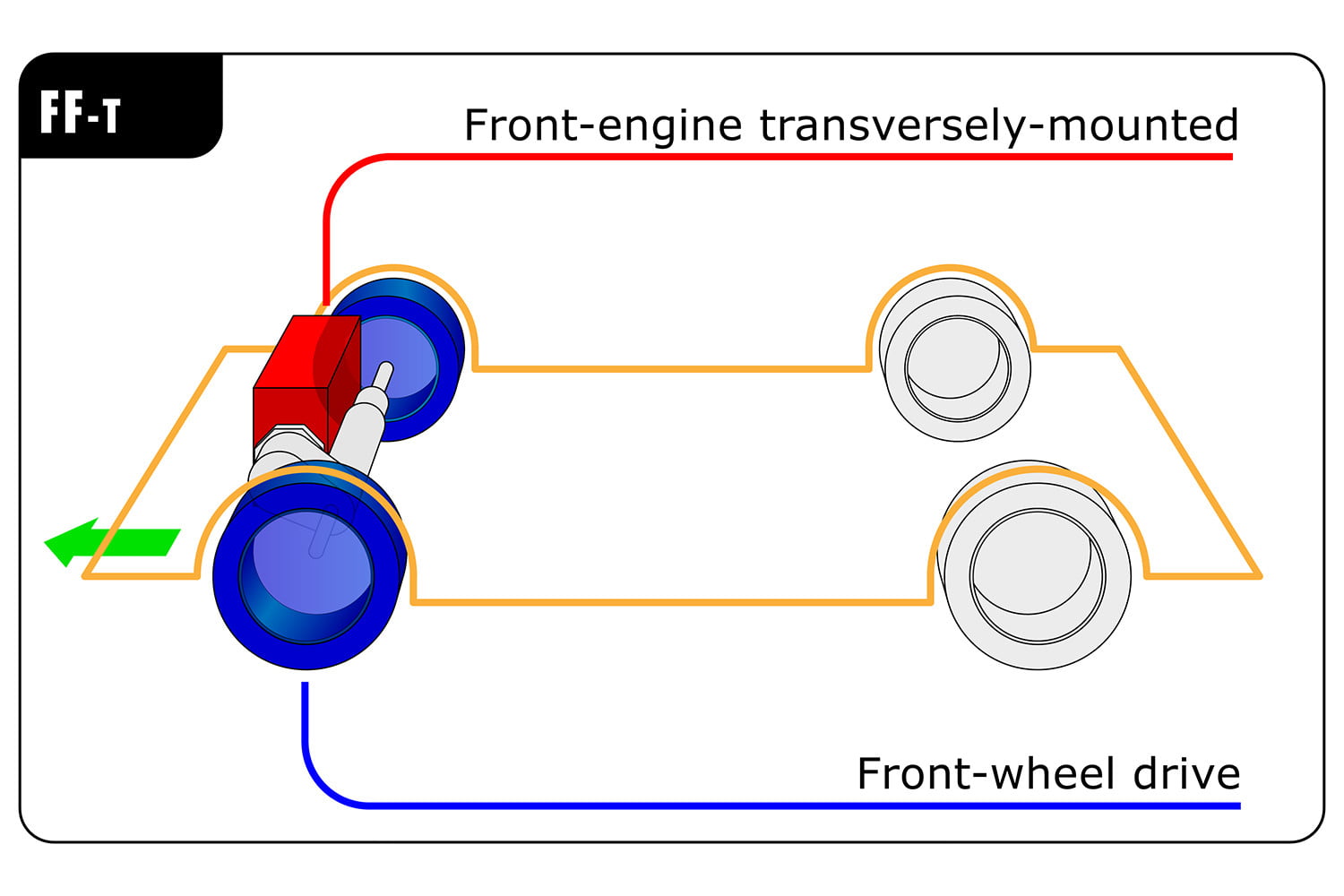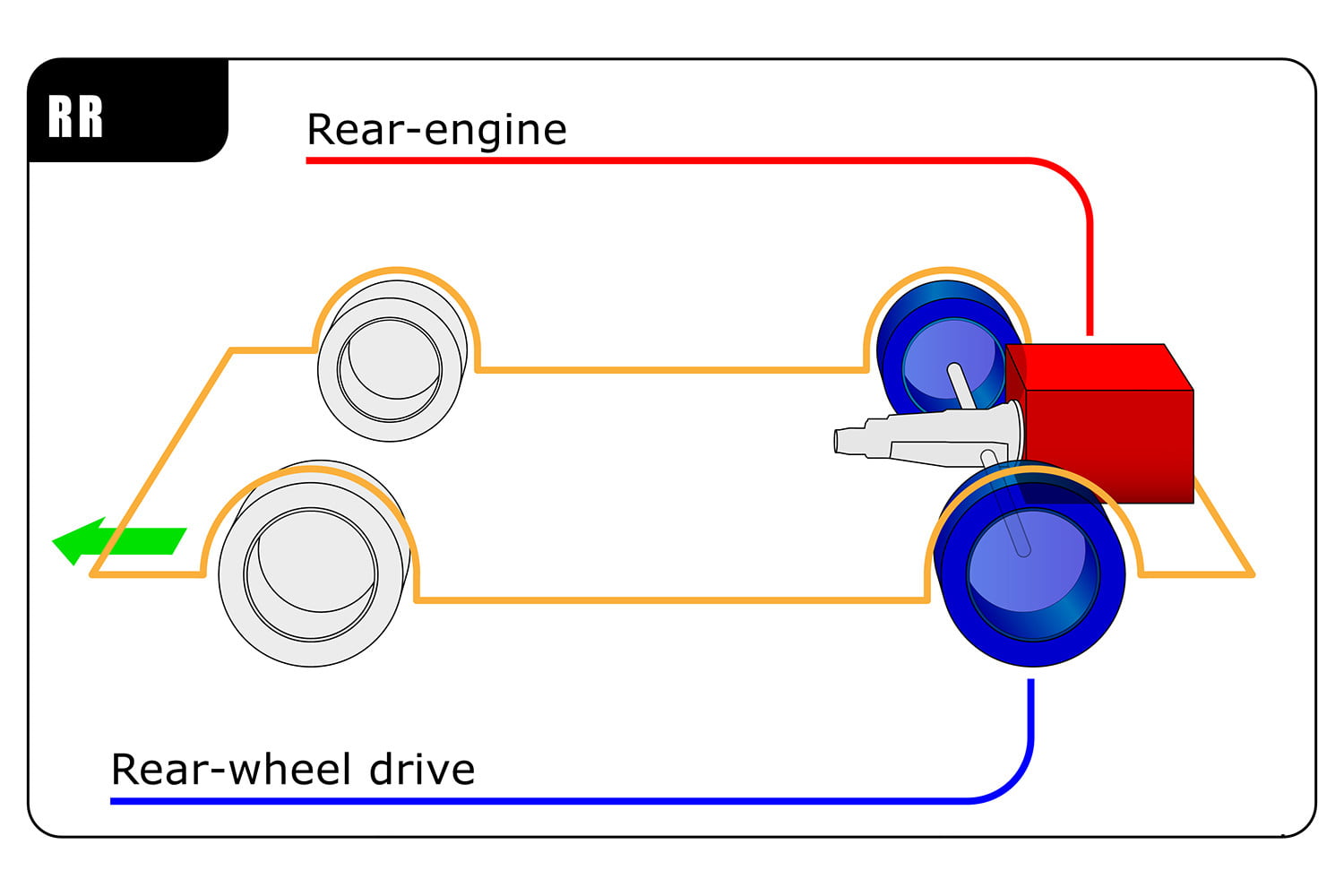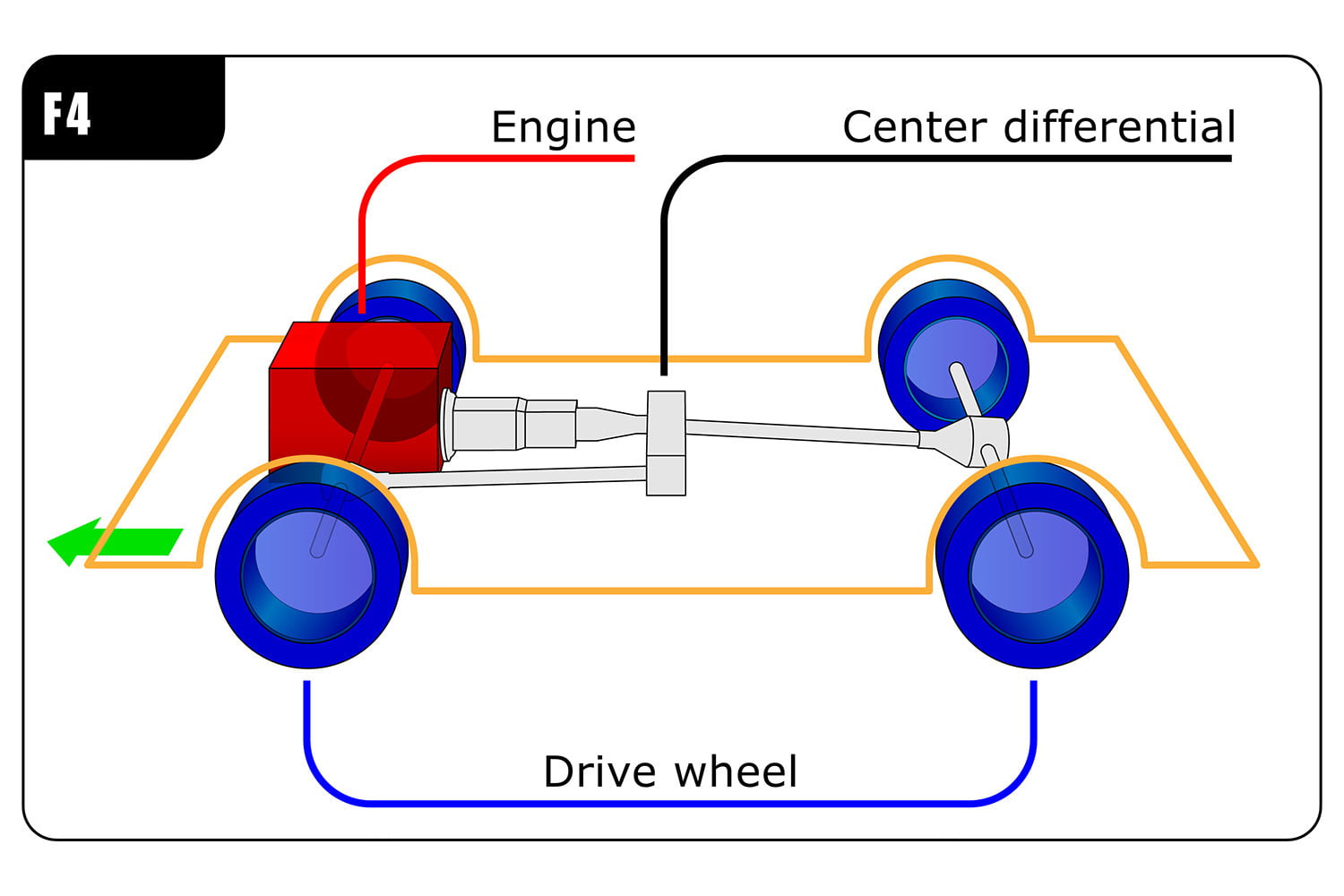Drivetrains-Rear Wheel Drive, Front Wheel Drive, All Wheel Drive, 4 Wheel Drive, What Wheel Drive?
[yop_poll id=”4″]
You’ve probably heard these jargons many times and wondered what on earth does it mean? We very well understand your hesitancy with these jumbled up mess of words and drivetrains sure does get confusing. GoMechanic is here to clear the air on Drivetrains and get rid of any misinformation surrounding it.
For the vehicularly ignorant, there are 4 types of drivetrain layouts. Their names distinctly suggest their orientation:
- RWD or Rear Wheel Drive
- FWD or Front Wheel Drive
- AWD or All Wheel Drive
- 4WD or 4 Wheel Drive
Each of these Drivetrains has its merits and demerits, and we are going to explore them all briefly.
It gets easy as this; The engine transmits power that needs to be put down to the road. Automakers engineer a geometry for that specific type of car, say a Hatchback or a Sedan. Finally, a suitable drivetrain is implemented for the wheels which receive the power from the engine.
It is generally FWD for small city cars and economy sedans, RWD for SUVs and passenger vehicles, AWD for high-end premium SUVs and 4WD for purpose-built off-roaders like Land Rovers and Land Cruisers.
Each type of drivetrain has a significant effect on the driving dynamics of that vehicle.
Let’s discuss the four Drivetrains in a bit of detail.
Front-Wheel Drive (FWD)
 The FWD is the most common arrangement in the auto industry, utilising the front wheels to drive the car. It is the most practical choice for the majority of today’s drivers. The idea behind the front-wheel-drive arrangement is to save space inside the cabin which is why you don’t see a hump on the floor on most modern front-wheel-drive cars. We can say that the FWD is the busiest and most task involved layout out of the four as it has to do three things all along at the same time, i.e. Steering, Driving the wheels and Braking.
The FWD is the most common arrangement in the auto industry, utilising the front wheels to drive the car. It is the most practical choice for the majority of today’s drivers. The idea behind the front-wheel-drive arrangement is to save space inside the cabin which is why you don’t see a hump on the floor on most modern front-wheel-drive cars. We can say that the FWD is the busiest and most task involved layout out of the four as it has to do three things all along at the same time, i.e. Steering, Driving the wheels and Braking.
Front Wheel Drive | Advantages
The front-wheel-drive configuration offers some advantages over Rear-wheel drive, as the gross weight of the car is set-up on the front, this, in turn, provides more traction to the front wheel which is being powered hence more grip on the road.
FWD also stands tall when it comes to manufacturing point of view as it’s significantly cheaper to build and as getting popular day by day, it is only getting more cost-effective.
Front-Wheel Drive setup is also lighter and in turn, helps with the fuel economy. FWD is commonly deployed in city cars and economy hatches.
Fact: The bonkers 2018 Honda Civic Type-R is an FWD hatchback.
Front Wheel Drive | Disadvantages
There is a demerit for the popular FWD, which is known as Torque Steering. Due to the nature of the setup that burdens it with three tasks, FWD can suffer from some severe Torque Steering, which means that the power from the engine overwhelms the front wheels which is felt when the car undergoes hard acceleration and the steering goes haywire.
Torque Steering causes the vehicle to steer left or right on its own, under the influence of the torque transmitted from the engine. But with the ever-developing modern technology, FWDs are getting smarter and agiler.
Rear Wheel Drive (RWD)
Enthusiast worship RWD, it is the most revered of all the four set-ups. The RWD or what we like to call it the ” Right Wheel Drive” is the most tried and true drivetrain setup of all. In this geometry, The rear wheel does the driving part whereas the front wheel takes up the steering. As Thanos says “Perfectly Balanced”.
Rear Wheel Drive | Advantages
RWD does wonders for the car and if you observe there is a perfect symphony between the front and the rear wheels as the rear pushes and the front steers hence there is no Torque Steering which allows for a more engaged and dynamic driving experience, therefore, RWD can handle more horsepower compared to an FWD.
This also provides engineering to tweak the suspension and the overall vehicle configuration. RWD is commonly employed in SUVs, premium luxury sedans and sports cars.
Rear Wheel Drive | Disadvantages
There are issues with the RWD though. It provides less traction when it encounters slippery and tread-unfriendly road surfaces. RWD is also relatively expensive to manufacture and service.
All Wheel Drive (AWD)
All-wheel drive take drivetrains to another level. Instead of utilising engine power on the rear or front wheels, the power goes to all the four. With an AWD there is a challenge as to which wheel out of the four should the power be transmitted and how much?
All Wheel Drive | Advantages
Depending on the system, in an AWD, power can be efficiently regulated and channelised to provide optimal traction at all time. In most systems, the power is sent to the front wheels in an instance of hard acceleration, and to the rear, in case better cornering stability is required. AWD also utilises the assistance of Traction Control which helps in attaining optimal driving rigidity.
AWD systems are especially helpful in rapidly changing road conditions. A transfer junction located at the middle of the car is responsible for diverting power to every wheel as it sees fit. Audi’s very own QUATTRO is an exceptional variant of the AWD drivetrain.
All Wheel Drive | Disadvantages
Demerits of AWD lies in the complexity of its manufacturing process. AWDs are also costly to repair and service.
4 Wheel Drive (4WD)
On the spec sheet, AWD and 4WD appear the same, and at any time both these terms are used interchangeably. Both these configurations utilise all the four wheels for traction. 4WD is also known as 4X4.
The very fundamental difference between these two lies in the flexibility that a 4WD offers. The 4WD is for more enthusiastic driving. It allows the driver to tweak the details of the vehicle’s driving attributes giving a more involved experience, that is why 4WD is primarily featured on purpose-built SUVs and off-roaders that require on the go drivability for severe off-roading, boulder climbing, water wading, steep hills, low traction demands.
4 Wheel Drive | Advantages
Most 4WD vehicles have a high and a low gear range; the latter is used to increase low-speed climbing power. Some have differentials (which allow left and right wheels and front and rear axles to turn at different speeds) to be locked for maximum traction. Most 4WD function via a second gear shift or through a button in the case of modern vehicles.
The 4WD is considered the holy grail amongst the serious off-roading community courtesy it tweakable driving characteristics.
4 Wheel Drive | Disadvantages
Aside from this. 4WD has no actual benefits in a typical day to day driving and being very similar to AWD, 4WD is also on the expensive side when it comes to service and repair.






